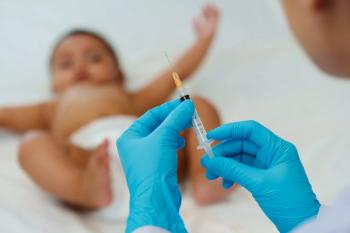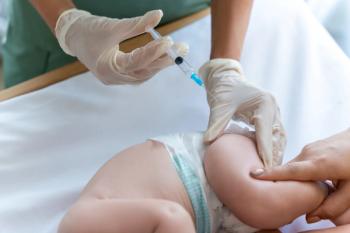
Self-Tests for COVID-19 Are Accurate and Tolerable for Children
A comparison of COVID-19 PCR tests and rapid self-tests found self-tests to be highly accurate and user-friendly for children.
COVID-19 diagnostic tests, once a luxury at the beginning of the pandemic, are thankfully now more accessible in the US. Naso-pharyngeal RT-PCR tests are highly accurate, but for rapid results at home, some opt for rapid lateral flow antigen tests.
The need for inexpensive, reliable, rapid tests is augmented by the relatively large proportion of children who are unvaccinated. One study, presented at this week’s 40th Annual Meeting of the European Society for Pediatric Infectious Diseases (ESPID), assessed the performance of the “COVID-VIRO ALL IN” COVID-19 rapid test in children.
This cross-sectional, prospective, multicenter, real-life study was conducted from September 1, 2021-January 3, 2022. Children 0-15 years old were recruited after presenting to emergency departments and ambulatory settings. The children were either symptomatic for COVID-19 or had been exposed to an infected person.
All children were given a SARS-CoV-2 RT-PCR or rapid antigen test, and a self-test. Above the age of 6, the children could easily perform the self-tests themselves, whereas younger children required the help of a parent or other adult.
The COVID-VIRO ALL IN (AAZ-LMB, Boulogne Billancourt, France) test was used for this study, due to its short sampling device and soft sponge swab. The comfort of use allowed for long sampling (15 seconds per nostril). The investigators compared self-collected nasal swabs to RT-PCR tests, estimating the accuracy and acceptance of these tests for pediatric populations.
A total of 836 pediatric patients, aged an average of 4 years, completed the COVID-19 diagnostic tests. A total of 92.6% of the children were symptomatic, and the prevalence of COVID-19 was 18.4%.
In comparison to the RT-PCR test, the sensitivity of the self-collected nasal swab test was 72.6% during the period when the Delta variant was predominant, and 87.0% during the Omicron wave.
False negative self-tests were largely aligned with low viral loads. Low viral load was established by RT-PCR with a cycle threshold ≥33 and/or a SARS-CoV-2 rapid antigen test positive in more than 3 minutes. The youngest child confirmed positive with a self-test was 1 month old.
On a scale from 1-10, with 1 being “very pleasant” and 10 being “very unpleasant,” 77.9% of children rated the test ≤ 3.
The investigators concluded that the nasal self-test used in this study was reliable, particularly in more contagious children. They noted that it is vital to provide highly accurate tests that are less invasive and unpleasant to encourage families to test their children for COVID-19.
This study, “Diagnostic Accuracy of SARS-CoV-2 Antigen Detection Self-Test in Children: Vigil Study 3,” was presented during the
Newsletter
Pharmacy practice is always changing. Stay ahead of the curve with the Drug Topics newsletter and get the latest drug information, industry trends, and patient care tips.











































































































































































































